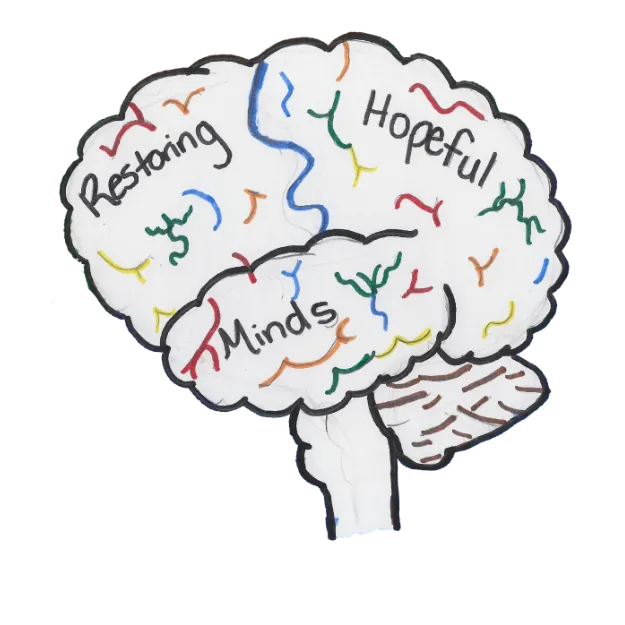Restoring Hopeful Minds
Counseling & Mental Health Services For Children, Families, & Adults.
About us

Restoring Hopeful Minds offers a holistic and interdisciplinary treatment approach tailored to the individual needs of each person and family served throughout all stages of care. Highly trained professionals from various disciplines collaborate to design treatment plans specific to meet these needs. We serve children, adolescents, adults, and seniors in the Greater Baltimore Metropolitan area.
Our Programs

School Mediation
Peer mediation has become very popular in schools all over the world. In the late 1990s, a Harvard study estimated that there were over 8,000 such programs implemented across the US, and the approach has continued to grow in popularity, although newer numbers seem hard to come by. The approach is popular, however, because it is a very successful response to conflict between students. Schools that use peer mediation report many benefits. One major one is teaching children problem-solving skills at a young age means that they will have those skills for the rest of their lives. In addition, schools report that the use of peer mediation has reduced behavior problems and suspension rates. Anecdotally, teachers notice higher self-esteem and confidence in students who participate in peer mediation.
Peer mediation has evolved since the 1980s when it was first implemented. In the beginning, just a small group of elite students would learn peer mediation. Now, it is understood that peer mediation works best with a diverse group of students. Experts recommend that peer mediators should be shy students, loud students, high-risk students, etc. A diverse group of students does a better job of reaching their peers, and they also benefit more from peer mediation. Shy students become more confident, loud students learn patience, etc.
There are several different types of peer mediation programs. In curriculum-based programs, conflict resolution is taught in the classroom. It can be a specific unit on conflict resolution, or combined with other subjects such as writing or art. School-wide programs can have significant results in elementary schools, where students usually have the same teacher who can reinforce conflict-resolution skills on a daily basis. In these programs, conflict resolution skills are taught first to counselors and administrators and then to teachers and finally to students. In secondary schools, conflict-resolution programs tend to take the form of elective courses or clubs. In higher education, students can either volunteer or become paid mediators. They deal with things like roommate and rent disputes, relationship issues etc While K-12 programs have generally been very successful, many college level-programs have reported problems getting students to participate, as well as obtaining funding and support from the administration.
For all peer mediation programs, administrative support and funding are critical. Often educators fear that it will take time away from the basics and undermine teacher's authority. Most often, these fears are unfounded. Teachers save time by not having to deal with as much conflict, and most teachers have found that peer mediation supports their authority instead of undermining it.
Community Interventions
Often school conflicts affect not just the school, but the larger community. For example the debate over whether or not to teach evolution in schools has been an ongoing conflict for many districts. In these cases, schools can also use alternative dispute resolution. Disputing parents and community members mostly have the well-being of the students as a mutual interest. Moreover, in their attempts to improve schools, parents can spark resource-draining conflicts that actually hurt the school in the long run. When educators are facing a difficult dilemma, their first step should be to acknowledge the conflict. Then, they can identify the source and begin a series of inclusive meetings. All the parties to the conflict should be represented: educators, parents, students, tax payers, etc. It may help to bring in a third party to facilitate or mediate the discussion. Several schools using this approach have had very positive results.
Examples:
Playground fights are common in elementary schools as some students bully others. These fights used to be ignored ("boys will be boys") or handled repressively by teachers who punish the perpetrators, who then get angry, and act out even more, creating a viscous cycle. Schools that utilize peer mediation to deal with such issues often have more success. The bullies and their victims both feel empowered by the mediation process (often bullying, ironically, is done by children who feel insecure or inferior) and learn better ways of interacting. Thus, mediation reduces the bullying problem, rather than increasing it, as authoritarian punishment often does.
Applications:
While most commonly used for student conflicts with student mediators, schools can benefit from mediation at all levels-for conflicts between administrators and teachers, between two teachers, between teachers and students, between parents and teachers, as well as between two or more students.
Aiming to improve the
quality of life for families
and individuals in order to make our communities a better place for all.


